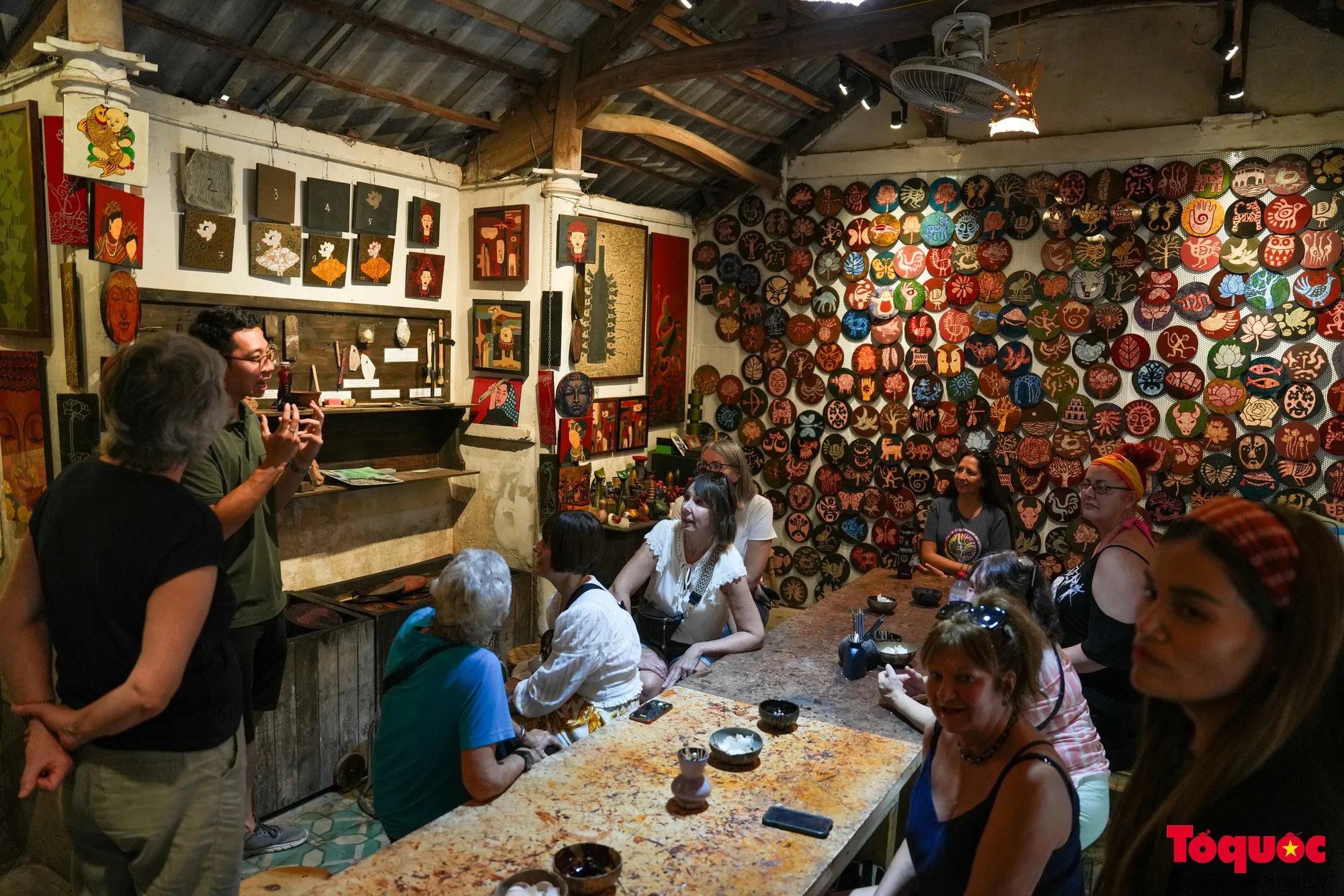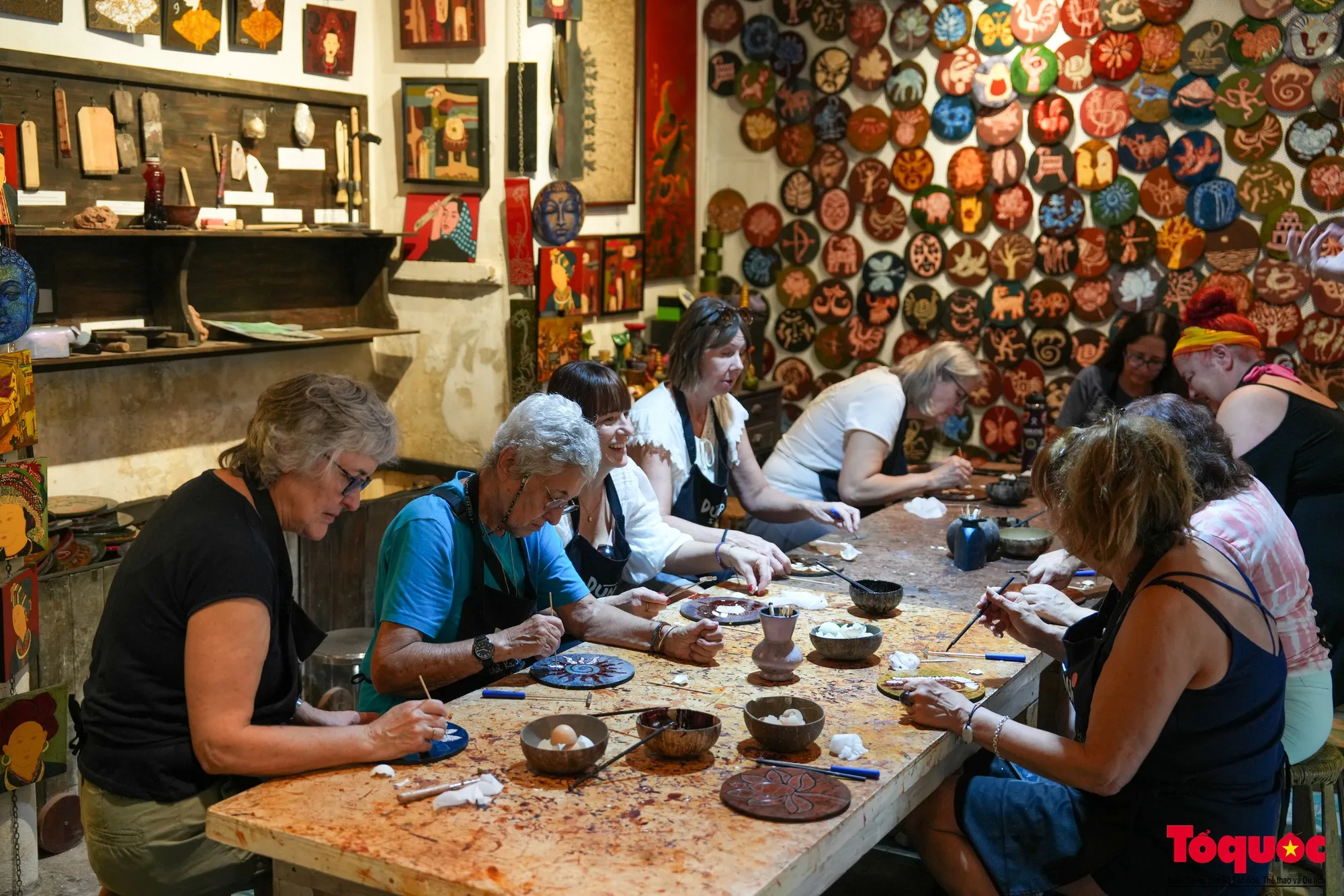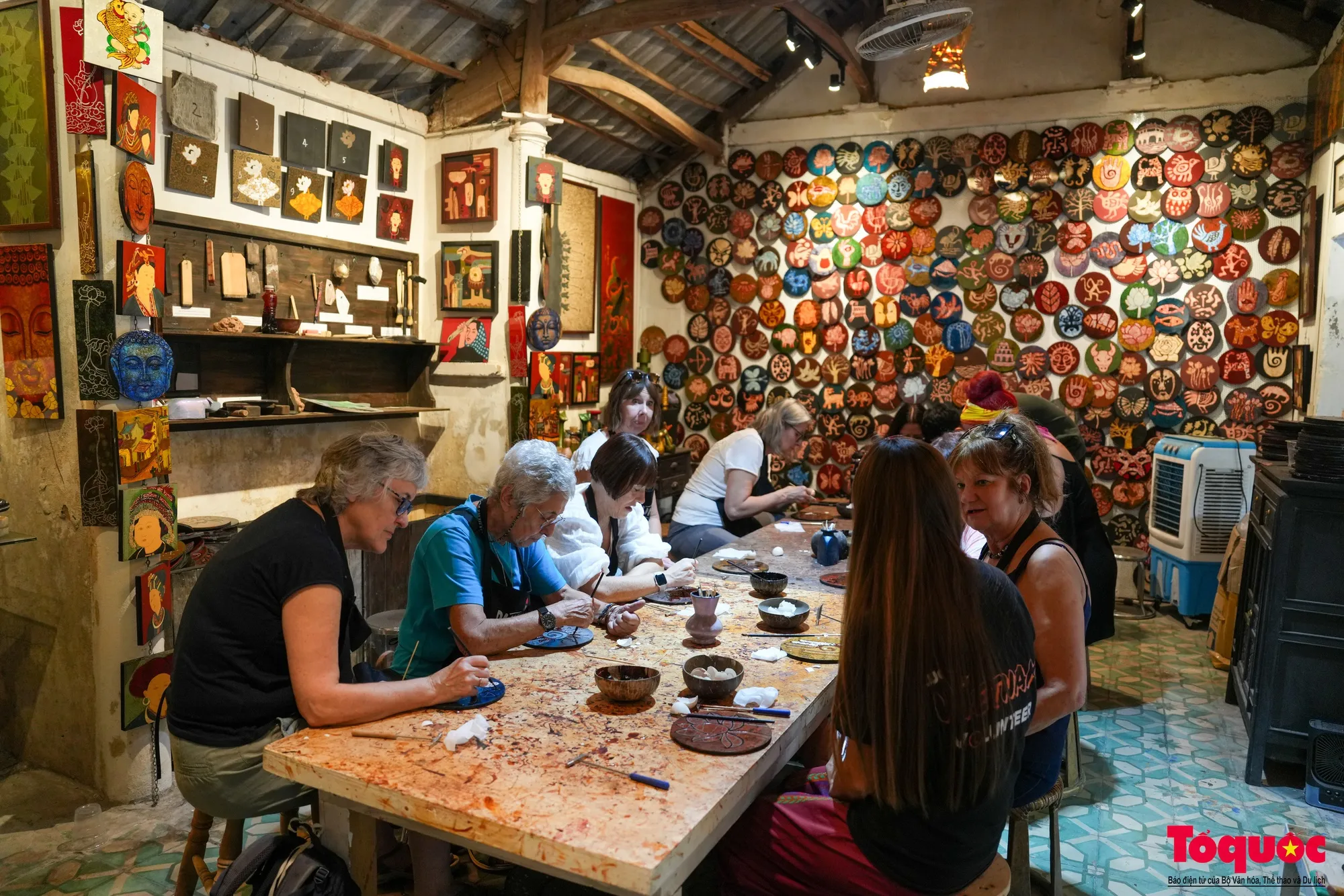Discover the vibrant culture of Vietnam not just through its famous landmarks, but also through its traditional craft villages, where artistic brilliance has been preserved and nurtured across generations. If you’re looking for a unique travel experience that combines cultural exploration and hands-on activities, visiting a traditional craft village is the perfect choice. Among the many craft villages scattered across Vietnam, Ha Thai Lacquer Village in Hanoi stands out as a top destination. It offers tourists a chance to admire the intricate beauty of lacquer works while creating their very own handmade pieces imbued with personal touches.
Ha Thai Lacquer Village: A Hub of Heritage and Craftsmanship
Nestled by the tranquil Nhue River, Ha Thai Village (Duyen Thai Commune, Thuong Tin District, Hanoi) has long been renowned for its traditional lacquer craft. With a history spanning hundreds of years, this village is considered a cradle of lacquer art in Vietnam. As you step into the village, you’ll feel an artistic atmosphere permeating every corner—from winding alleys to ancient houses. Everywhere you turn, you’ll see the tools of the trade—lacquers, molds, and artisans diligently working on their painstaking creations.
Ha Thai lacquer art is not merely a craft but also a cultural treasure encapsulating the artistry and spirit of the Vietnamese people. Every lacquer product undergoes a meticulous, multi-step process that requires exceptional skill, patience, and dedication from the artisan. From selecting and treating wood, shaping it, to the stages of lacquering, sanding, painting, and inlaying—each step is performed manually and faithfully follows age-old techniques passed down through generations.

The lacquer products from Ha Thai are not only visually stunning but also imbued with profound cultural values. From exquisite lacquer paintings and intricately designed vases, trays, jewelry boxes, to decorative interior pieces—each creation carries the soul of Vietnamese culture, showcasing sophistication, elegance, and timeless appeal. It’s no wonder that Ha Thai lacquerware is cherished both domestically and internationally, making it a meaningful and unique souvenir for visitors to Vietnam.
A Hands-On Experience: Learning to Create Lacquer Art
To meet tourists’ growing demand for cultural experiences, many artisans in Ha Thai Village have opened their workshops and organized lacquer-making classes. These provide an exceptional opportunity for visitors to gain first-hand insight and participate in this traditional craft. Leading the charge in offering such experiences is artist Tran Cong Dung, the owner of a renowned lacquer painting workshop in Ha Thai.
At Tran Cong Dung’s workshop, visitors not only admire unique lacquer creations but also dive into the creative process themselves. Dung has curated experiential programs suitable for all ages, from adults to children, and for everyone—from complete novices to seasoned art enthusiasts.

Participants receive step-by-step guidance from artisans to create simple lacquer products, often focusing on the signature egg-shell inlay technique of Ha Thai. From sketching designs and selecting colors to inlaying egg shells, affixing materials, sanding, and polishing—each stage offers new, engaging experiences. Visitors are particularly delighted to use miniature hammers to gently break egg shells, forming unique textures on their artwork.
According to artist Tran Cong Dung, simplifying the process helps visitors easily complete their creations within a few hours. However, the essence of the experience lies in appreciating the meticulous craftsmanship and intricate artistry of traditional lacquer-making. Above all, tourists leave with an enduring memento—a personalized item crafted by their own hands, brimming with memories of their visit to Ha Thai Village.

The allure of learning lacquer art at Ha Thai Village is not confined to domestic tourists—it has charmed international visitors from all corners of the world, eager to delve into Vietnamese culture and uncover the distinctiveness of traditional crafts. Artist Dung shares that his workshop frequently hosts international groups, sometimes welcoming 3-4 groups on peak days. The excitement and enthusiasm of both local and international tourists serve as a remarkable catalyst for Dung and other artisans to continue developing this unique type of experiential tourism.
Craft Village Tourism: A Flourishing Cultural Experience
Craft village tourism paired with hands-on learning is becoming a favored travel trend both in Vietnam and globally. This travel style offers fresh, intriguing activities while supporting efforts to preserve and promote the cultural heritage of craft villages. By engaging in such tours, visitors not only observe production processes but also actively participate, creating personalized items that reflect their unique preferences.

With its rich history and culture, Hanoi stands as one of the leading cities in developing craft village tourism. The city has introduced various initiatives to support traditional villages, including the “Nam Thang Long Heritage Route.” This tourism route links iconic villages such as Bat Trang Ceramic Village, Van Phuc Silk Village, Chuong Conical Hat Village, and Ha Thai Lacquer Village—forming a compelling chain of destinations for diverse and enriching experiences.
Promoting craft village tourism not only generates economic benefits for locals but also showcases Vietnamese culture to the world. Through hands-on experiences, visitors gain a deeper appreciation for the intricacies of manual labor, the creativity and dedication of artisans, and the enduring beauty of ancient traditions passed down through history.
Conclusion
Exploring Ha Thai Lacquer Village offers an extraordinary journey blending cultural discovery and personable hands-on activities. Here, tourists embrace the refined art of lacquer-making, crafting unique keepsakes while learning about Vietnam’s cultural heritage and the ingenious craftsmanship of its artisans. For those seeking a distinct and meaningful travel experience, Ha Thai Lacquer Village is an unmissable destination. Visit and immerse yourself in this cultural haven, transforming your trip into a celebration of Vietnam’s rich traditions and artistry.